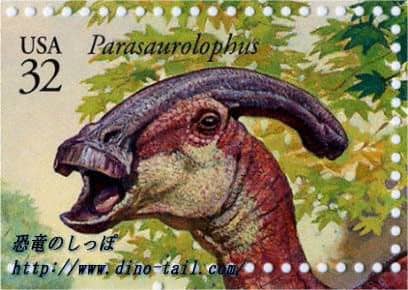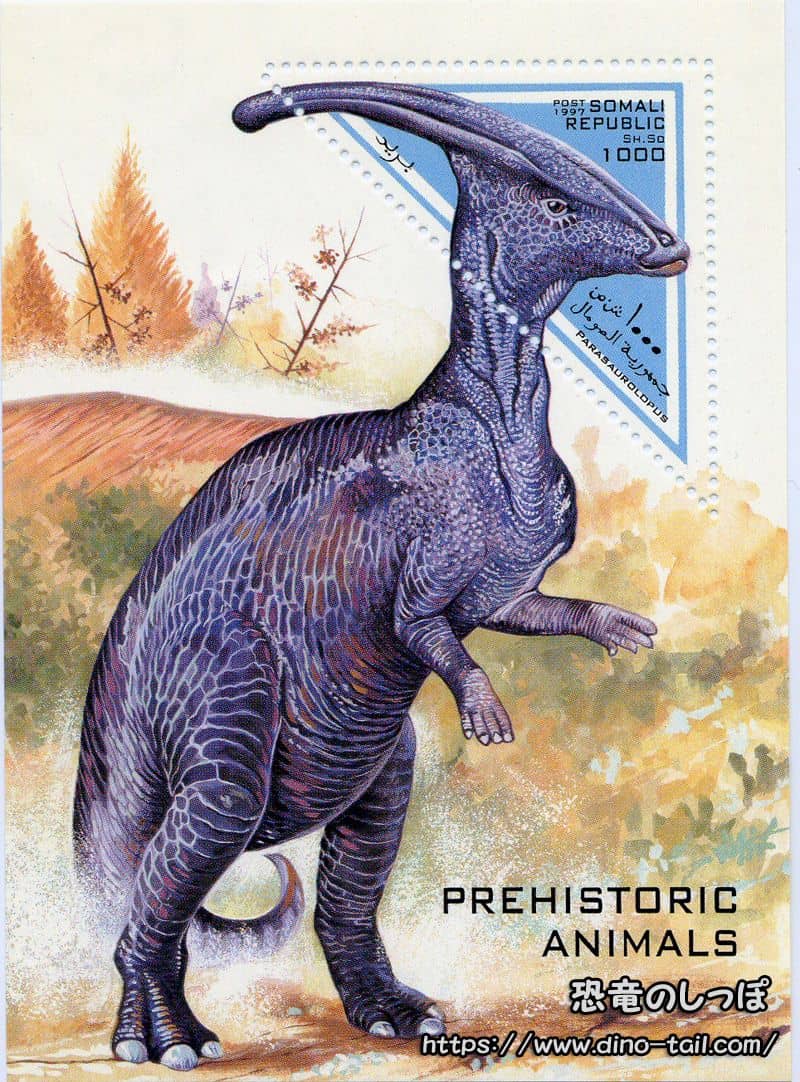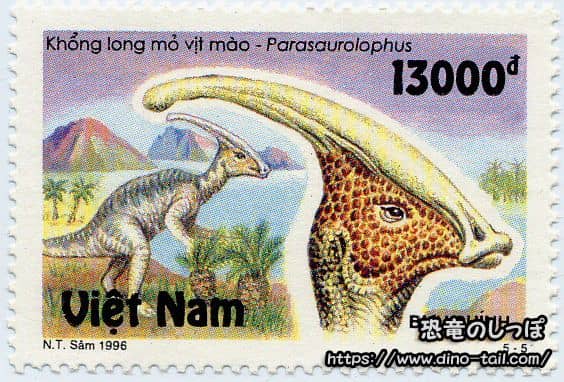About Parasaurolophus
| Scientific Name (Genus) | Parasaurolophus |
| Meaning of Name |
Near Saurolophus (lizard crest)
para (near) [Greek] - sauros (lizard) [Greek] - lophos (crest) [Greek] |
| Classification | Ornithischia, Ornithopoda (Hadrosauridae, Lambeosaurinae) |
| Total Length | Approx. 10 - 12m |
| Diet | Herbivorous |
| Period | Late Cretaceous |
| Species |
Parasaurolophus walkeri
Parasaurolophus tubicen Parasaurolophus cyrtocristatus |
| Year of Paper Publication | 1922 |
| Genus Name Publication |
Parasaurolophus walkeri, a new genus and species of trachodont dinosaur.
University of Toronto Studies: Geological Series. 13 by William A. Parks. 1922. |
Features
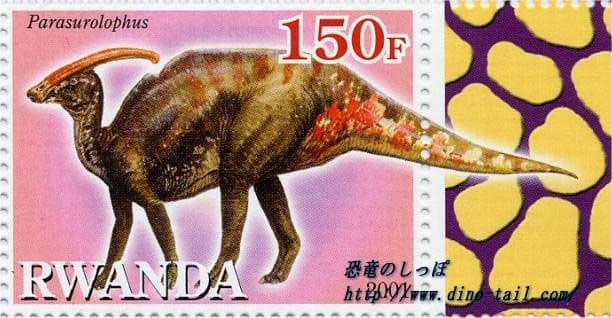
Parasaurolophus was a large ornithopod that lived in North America during the Late Cretaceous period.
The genus name means 'near Saurolophus' (a large ornithopod from Mongolia described in 1912), but it belongs to a different group (Lambeosaurinae) than Saurolophus (Saurolophinae) and is not particularly closely related taxonomically.
The most distinctive feature of Parasaurolophus is the long, tubular, bony crest that extends backward from its head. This structure was a long-standing mystery, but its multifunctionality was revealed by a study of an astonishingly well-preserved skull fossil reported in 2021.
As a result of analyzing its internal structure using CT scans, it is now certain that the crest was a multifunctional tool that served at least the following three roles, rather than a single function:
- Acoustics (Communication): The complex tubes inside could produce a unique, low-frequency sound, like a trumpet, when air was blown through them. It is thought to have been used for communication with distant members of its species and to warn of danger.
- Visual (Display): The shape and size of the crest varied by species, sex, and maturity, and it was an important visual symbol for identifying its own kind.
- Thermoregulation: The inside of the crest was lined with countless blood vessels, and it is thought to have functioned like a radiator, serving as a cooling device to protect the brain from overheating.
Skin impressions have also been found, revealing that its body was covered in uniform, pebble-like scales (scutella).
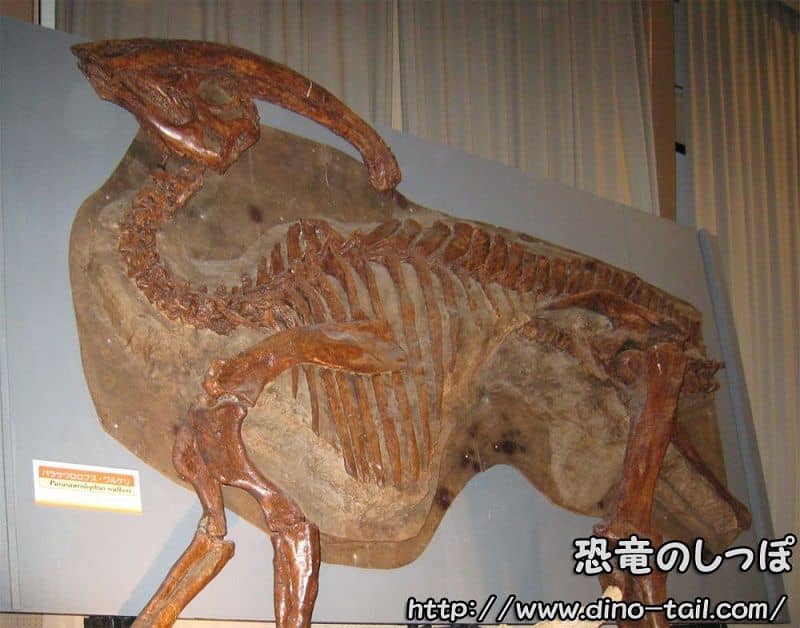
Baby Parasaurolophus
In 2009, a juvenile Parasaurolophus fossil was found in the Kaiparowits Formation in Utah, USA. Published in a paper in 2013 and cataloged as specimen number RAM 14000, this juvenile was 2.5 meters long and estimated to be less than a year old.
Its crest was not as developed as that of an adult Parasaurolophus. Instead of being long and tubular like an adult's, it was low and hemispherical, and it seems to have produced a different sound than an adult.
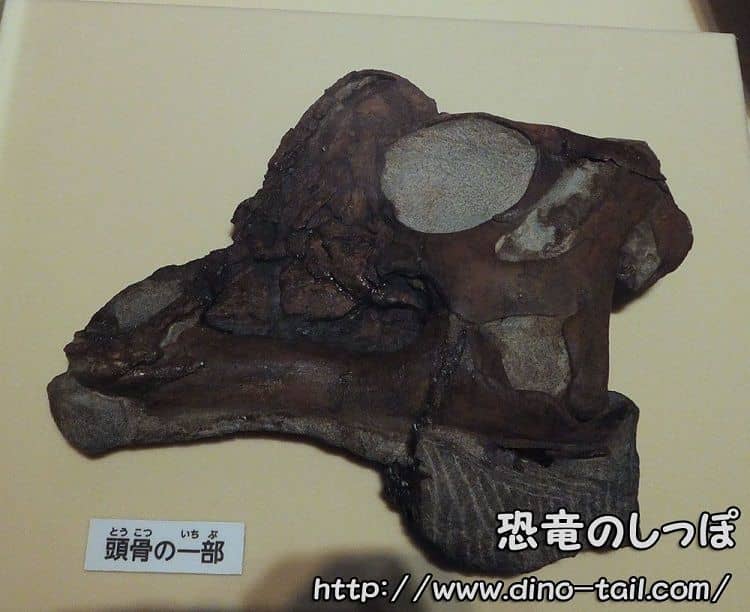
The actual fossil was exhibited at the [Dinosaur Expo 2016] held at the National Museum of Nature and Science.
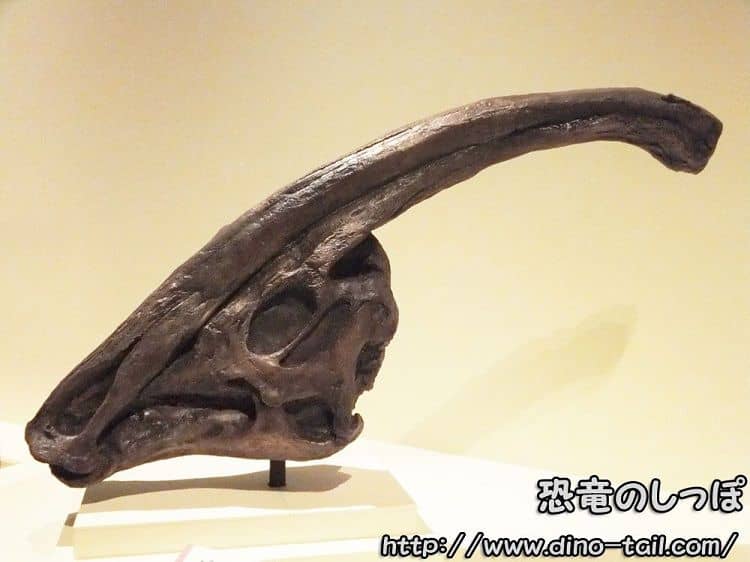
Discovery and Description Paper
In 1920, during a field study by the University of Toronto in the Late Cretaceous strata along the Red Deer River in Alberta, a partial skeleton including a distinctive skull was discovered.
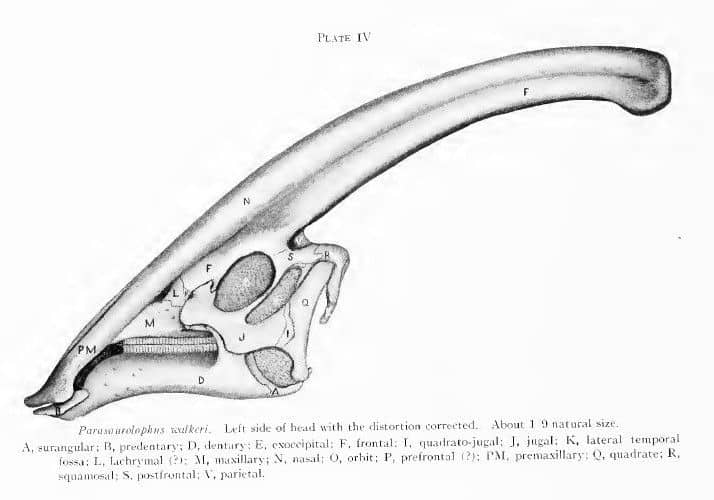
Source: Parasaurolophus walkeri, a new genus and species of trachodont dinosaur.
University of Toronto Studies: Geological Series. 13
by William A. Parks. 1922.
In 1922, based on the fossils discovered at that time (specimen number ROM 768), the University of Toronto paleontologist William A. Parks described the new genus and species Parasaurolophus walkeri. The species name 'walkeri' seems to have been given in honor of Sir Byron Edmund Walker, who contributed to the development of cultural and educational projects at the University of Toronto, the National Gallery of Canada, and the Royal Ontario Museum.
Three species of the genus Parasaurolophus are currently known.
The second species was discovered in 1921 in the Kirtland Formation in New Mexico, USA. Although it was a partial skull fossil, it was sent to the Swedish paleontologist Carl Wiman and described in 1931 as a new species of Parasaurolophus, Parasaurolophus tubicen.
The third species is Parasaurolophus cyrtocristatus, described by John Ostrom in 1961. It was described based on a fossil consisting of a partial skull, tail, and neck, cataloged as specimen number FMNH P27393.
The three species are distinguished by the curvature and length of the crest on their skulls. Parasaurolophus walkeri, the first to be described, had a simpler and straighter internal structure of the crest compared to the other two species.
Parasaurolophus Stamp & Fossil Gallery
